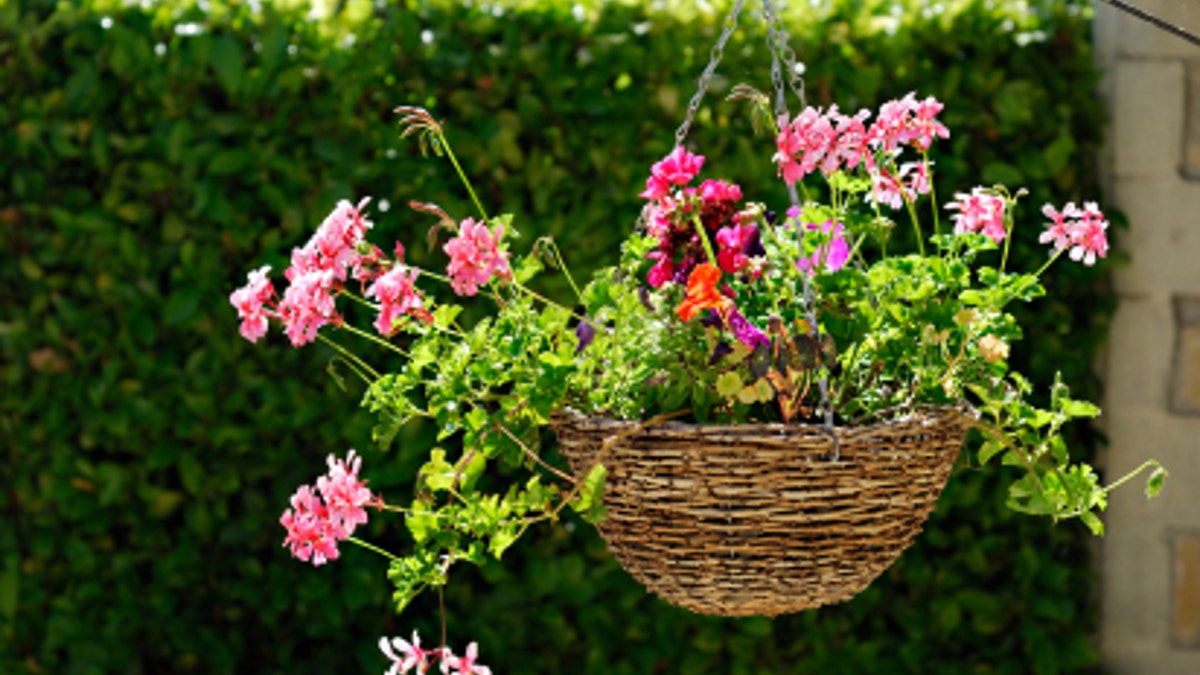
((c) Peter Garbet 2009 All Rights Reserved)
In addition to adding a splash of color to your patio, hanging baskets are a way to literally get your garden off the ground. Here are some tips for planting your hanging baskets.
Fillers, spillers and thrillers
Ryan VanDerhoef, owner of Progressive Gardens in Cedar Knolls, N.J., says to incorporate three elements when planting a hanging basket: the filler, the spiller and the thriller.
Filler plants like petunias, nemesia and coleus are used to take up space in the basket. Spiller plants -- like calibrachoa and bacopa -- tumble over the edge of the basket and give it some dimension. Add thriller plants to catch the eye, like a brightly-colored lobelia or purple fountain grass.
Scott Sullivan of Chicago-based Topiarius Urban Garden and Floral Design recommends using tradescantia for hanging baskets. "It grows long and fast [and] keeps great foliage color all summer," he says.
Stephanie Appel, a landscape architect at Palmers Gardens and Goods in Orlando, Fla., says the best plants for hanging baskets vary, based on where you will be hanging the baskets.
For baskets that will be exposed to bright light, she recommends ivy geranium because it hangs downward or spills out of the basket. Dune sunflowers, which are drought-tolerant wildflowers native to the East Coast, are also a good choice for sunny spots. For baskets that will hang in the shade, Appel suggests verbena or vinca.
Hanging baskets are not limited to flowers; other kinds of plants also work nicely. Appel recommends pothos in addition to the above plants for shady spots.
According to GardeningKnowHow.com, cherry tomatoes, strawberries, basil, parsley and ivy are great for hanging baskets. Hanging plants, in general, will likely dry out faster than those in the ground, so remember to water and check on them often.
Play with color
Pick a color scheme for your basket before you select your plants, and remember your vision when you select the actual basket so it does not clash with the plants. If purple is your color, use different shades throughout the basket, and consider adding some white for contrast. You can also work with harmonious color combinations with greens, blues and purples. VanDerhoef suggests visiting your local garden center to check out the hanging baskets on display.
"You will see literally hundreds of combinations you can try for yourself," he says. "Remember, nature has a great way of making all colors and textures work together, so don't be afraid to try various color combinations."
If you are dealing with small containers, you may want to stick to one kind of plant, but you can use ones that bloom in different colors to avoid stifling your creativity. When combining flowers in large baskets, make sure you match up ones that grow under similar conditions.
Purdue University's Department of Horticulture says to consider the size of your basket and its contents in relation to the surrounding area. Keep the proportions in mind, especially if the flowers have not yet bloomed. Make sure the baskets are balanced.